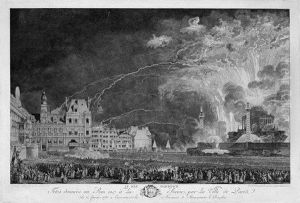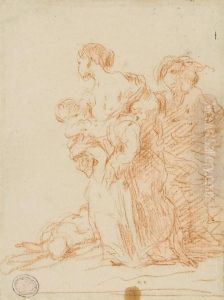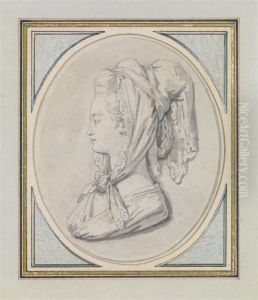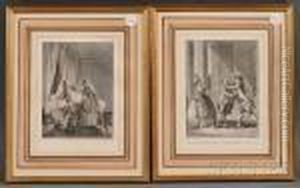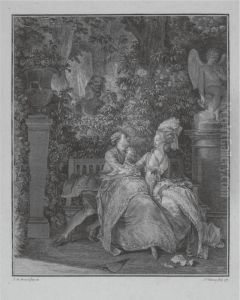Michel Moreau Jean Paintings
Michel Moreau le Jeune, also known as Michel Moreau the Younger to distinguish him from his father, was an important French illustrator and engraver of the 18th century, born on March 26, 1741, in Paris, France. He hailed from a family with a strong artistic pedigree, as his father, Moreau le Père, was also an accomplished engraver. Moreau le Jeune was apprenticed to his father and later studied under the French engravers Louis Simon Lempereur and Jacques Philippe Le Bas, which provided him with a solid foundation in the art of engraving and illustration.
Moreau le Jeune emerged as a prominent figure in the French art scene during the latter half of the 18th century. He became well-known for his elegant illustrations that captured the refined aesthetic of the time, often reflecting the fashionable and philosophical currents of pre-revolutionary France. His works were characterized by their classical influences, attention to detail, and a delicate touch, which made his engravings highly sought after for the illustration of books and literary works.
During his career, Moreau le Jeune was commissioned to illustrate many prestigious projects. He produced a series of engravings for the famous 'Monument du Costume Physique et Moral de la fin du dix-huitième siècle' (Monument to the Physical and Moral Costume of the End of the Eighteenth Century), which provided a fascinating visual record of the customs, fashions, and daily life of the time. He also illustrated 'Les Contes de La Fontaine' (Tales of La Fontaine) and was involved in the production of images for 'Description des Arts et Métiers' (Description of the Arts and Trades), a significant encyclopedia of trade and industry.
As the French Revolution unfolded, Moreau le Jeune's career experienced the changing tides of political and social upheaval. Although he continued to work, the Revolution altered the nature of artistic patronage and the tastes of the art-consuming public. Despite these challenges, Moreau le Jeune adapted to the times and found new avenues for his work, including producing designs for the revolutionary government.
Michel Moreau le Jeune died on January 14, 1814, in Paris. His legacy is preserved through the numerous engravings and illustrations that offer a window into the world of 18th-century France. Today, his works are considered valuable documents of the period's cultural history and are studied for their artistic merit as well as their historical significance.
